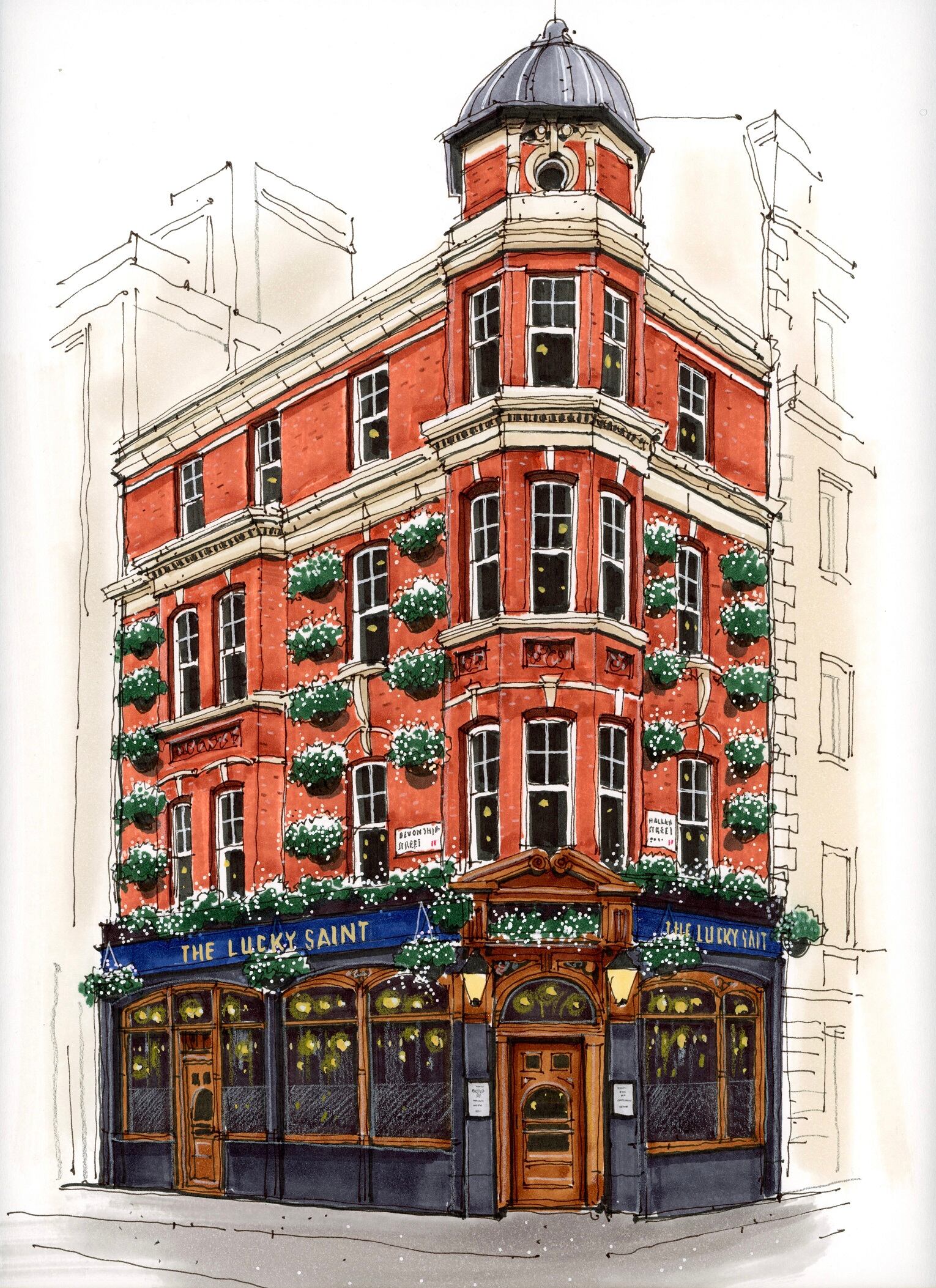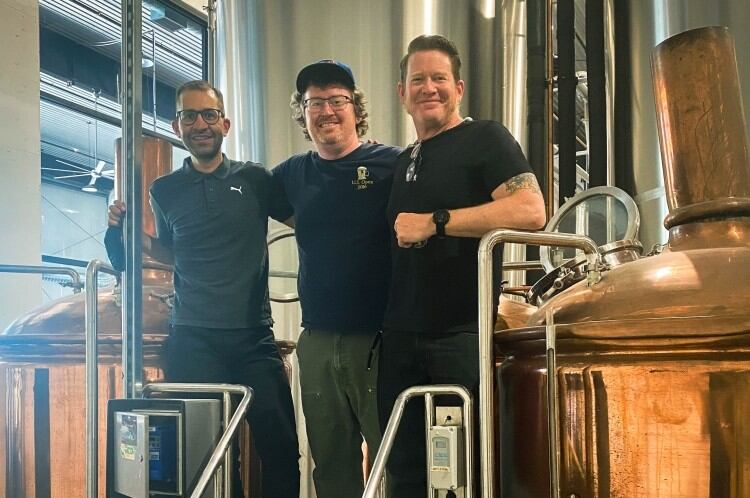1. It might actually be that fewer people are giving up alcohol in January (and that's not necessarily a bad thing)
There's no doubt that the idea of giving up alcohol for January has really taken off in the last 10 years since Alcohol Change UK started its Dry January campaign in 2013.
In 2013, 4,000 people signed up in the UK. In 2022, around 8 million people took part; and the charity estimated 9 million would to take part in 2023.
And yet this year, there have been suggestions that this is plateauing. In the US, market intelligence agency Morning Consult suggested in December that Dry January participation was expected to dip in 2023.
Drizly has reported a 56% increase in non-alcoholic categories this January compared to the same month last year. That could actually suggest a larger number of people taking part in January, more people searching for alcohol-free options as they cut back without abstaining entirely, or tracking a general a year-on-year increase in interest in the category.
However, it did note that possible reasons for this are a) fewer drinkers overall to start with and b) this is against a high in January 2022 when people were keen to shake off pandemic weight.
And industry insiders will tell you that sales are now spread out much more evenly over the year than before (see for example insights from Big Drop Brewing and Bax Botanics) and consumer trends and consumption patterns are changing (more on this below).
So while figures may suggest a possible dip in participation, that needs to be taken against the context of a shifting and growing population of moderate drinkers.
And at the end of the day, a consistent, long-term market is far more important than a peak in the first two weeks of January.
2. Damp January offers mass accessibility to Drynuary
Actually, 2023 has been the year where Damp January – Drynuary’s much more friendly and approachable little sister – has come to the fore.
Damp January helps people get over the daunting commitment of cutting out alcohol entirely by following the more forgiving challenge of cutting back.
A huge number of alcohol-free beverage consumers are not actually concerned with giving up alcohol – they’re just trying to cut back and be more healthy and are quite happy to switch between alcoholic and non-alcoholic drinks. Damp January helps more and more people find this middle ground (remember, also, that Drynuary has always been about finding a better relationship with alcohol rather than being anti-alcohol per se).
And Damp January also helps the low/no alcohol free movement build up positive vibes: it’s about willingly cutting back on alcohol without being haunted by the negative impression that there’s a pleasure to be denied or a mountain to be climbed.
3. Moving to the next level: Developing a bricks and mortar presence
The key to growing the low and no alcohol category has always been about awareness. That, in turn, has been about getting new brands out to consumers.
We started off seeing low/no brands launch with D2C models. We’ve also seen the launch of online retailers dedicated to the category, as well as other online retailers making dedicated sections or easier signposting to the category.
But however great e-commerce is, growing the category really requires putting brands in front of consumers so they know they exist. Over the last few years, supermarkets have been increasingly dedicating shelf space to low/no drinks, helping more brands gain listings in stores. More bars are thinking about dedicating a chunky part of their menu to alcohol-free alternatives, rather than slipping in a couple of mocktails at the bottom.
All great things. But what we’re now seeing is the next step: the advent of good old solid bricks-and-mortar stores and venues dedicated to low and no alcohol drinks. For example, there’s Club Soda’s new Tasting Room and shop in London’s Covent Garden (which opened at the end of 2022); Spirited Away in New York; and Maya’s non-alcoholic cocktail bar in London (which opened as a pop-up this month).

Coming soon is alcohol-free beer brand Lucky Saint’s London pub, set to open in March, which will be used as a testing ground with the brand promising to share its findings on championing alcohol-free in pubs, focusing on product quality and provenance, staff training and menu creation.
Why’s this important? It’s about placing the category in front of a mass audience as a very real and tangible proposition.
It’s about showcasing the variety of choice in the category as well as creating an environment where people can actually try drinks before purchasing them – which, for a category that can still be plagued by perceptions that alcohol-free products are inferior in taste, is vital.
4. Price is a problem (and the category really needs to hurry up and address this)
It's been the Achilles Heel for the category for as long as it has existed. Sooner or later, the consumer inevitably asks: 'why should I pay as much / nearly as much for a non-alcoholic drink as an alcoholic one?'
Lumina Intelligence goes as far as to call this 'the most significant challenge' for the category: pointing out many consumers find products too expensive (16%) and poor value for money (14%).
Speak to people in the industry and they'll give you some good reasons (the cost of quality ingredients, costs of production and development, for example), but this isn't really enough to convince consumers against the stark reality of shelling out the dosh.
Low2No Bev 2023
Working in the low/no category? Low2No Bev, the trade show for the low/no drinks industry, brings together the best in the industry!
In fact, research from UK market intelligence agency Vypr goes as far as to say that, while 53% of consumers feel that going dry saves them money, almost as many again felt that there were no savings or that it was even more expensive.
In their survey, 33% said going dry had little or no impact on their finances and 14% said it was more expensive.
Again, this is not a new problem. But it's an old problem against a new context of inflation, economic uncertainty and tightening of belts. As this continues to bite, paying a premium for a non-alcoholic product is going to increasingly be seen as nonsensical. The industry needs to respond accordingly.
5. Will 2023 and beyond see a mass change in how we approach alcohol?
Creating a stir in January was the publication of Canada's new drinking guidelines: which propose people should drink no more than two drinks a week.
More dramatic, however, was the stark declaration that 'no amount or kind of alcohol is good for your health'.
Beneath the headlines, what’s most interesting about Canada’s recommendations is that they push for an entirely different approach to how much alcohol is okay. For years, the idea has been that a certain amount of alcohol (i.e., 15 drinks a week in Canada for a man) is acceptable. To be fair, official guidance has always said less is better: but by and large the figures have been interpreted as a simple clear line between good (15 drinks) and evil (16 drinks).
The new guidelines want to encourage a complete cultural shift in how we think of alcohol: away from the idea of an ‘acceptable’ level of consumption to a sliding scale where less is always better.
Canada's new guidelines are out of line with those of other nations such as the US and UK and - as outlined above - the idea of moderation is much more attractive than abstaining.
But, having grabbed headlines worldwide, it will be interesting to see if Canada's guidelines do signal the start of new approach to alcohol - and a new, larger and broader wave of enthusiasm for low and no alcohol products.
My Drynuary: What we learned from entrepreneurs in alcohol-free
Want more insights into the low/no alcohol market? BeverageDaily's 'My Drynuary' series talked to some of the movers and shakers in the industry...
> David Fudge, co-founder and CEO of US non-alcoholic spirit brand Aplós, explains why he thinks functional ingredients are the key to reshaping the drinks category.
> Joelle Drummond, Co-Founder and Director of Sales and Marketing at Welsh brewery Drop Bear Beer, tells us about plans for expansion.
> Mark Wong, founder of UK functional non-alcoholic beer start-up Impossibrew, looks at the parallels between the alcohol alternative category and the meat alternative movement

> Steve Abrams, from non-alcoholic beer brand Harmon’s, tells us about the Canadian market.
> Mark Livings, CEO of Lyre’s, shares his secrets for global success.
> California entrepreneurs Jordan Bass and Nick Taranto talk to us about their experience in founding and growing HOP WTR: an alcohol-free sparkling hop water with nootropics.
> System’s co-founders Anthony Spina and Matt Sievers explain why they think the category lines between alcoholic and non-alcoholic beverages are blurring like never before.
> Marcus Sakey, founding partner and chief brand officer of Ritual Zero Proof, tells us about his non-alcoholic spirit alternative.
> Matthew Jukes of Jukes Cordialities explores the alcohol-free wine alternative industry.
> Paul Holle, head brewer and owner of Idaho’s Sawtooth Brewery, shares how the brewery has expanded into non-alcoholic options.
> Marie Fukuura, Future Growth Director, Budweiser Brewing Group UK&I, tells us why the AB InBev company is increasing its efforts in low and no alcohol.
> Everleaf’s commercial director Daniel I'Anson tells us about the importance of the on-trade

> Kristina Roth of US soft seltzer and non-alcoholic spirit brand Mixoloshe tells us what’s inspiring about the category
> Vanessa Royle and Mariah Wood share how they are debuting their new non-alcoholic RTD cocktail brand Tilden in the US.
> Amanda Thomson explains how she went from arts broadcaster to the alcohol-free wine innovator behind Noughty
> Howard Davies, co-founder and director of UK’s Salcombe Distilling Company and alcohol-free drink New London Light, tells us what's coming up for the company in 2023.
> Rose Bax, co-founder of Bax Botanics, explains how the brand is drawing on botanicals for complex and layered flavors.
> Big Drop Brewing tells us how the alcohol-free beer category has evolved since it was founded in 2016
> Laura Willoughby of Club Soda shares the big opportunities and challenges for alcohol-free in 2023

